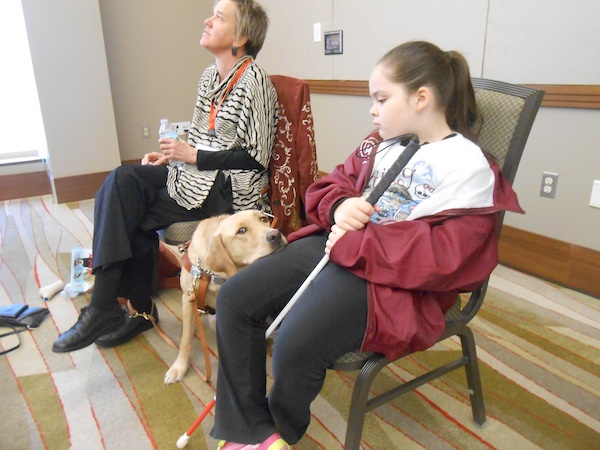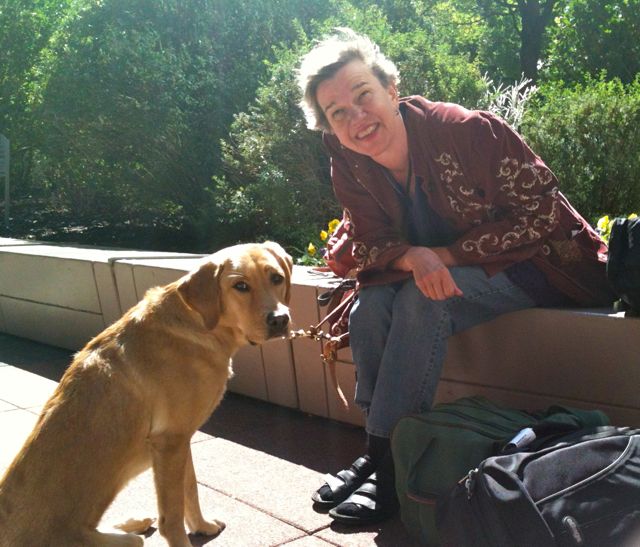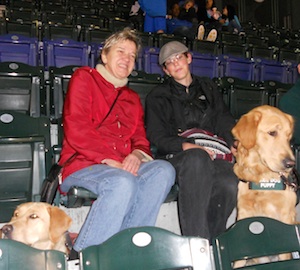From Halsted to Diversity
October 15, 2012 • 36 Comments • Posted in Beth Finke, blindness, memoir writing, Uncategorized, visiting schools, writing Every semester Janie Isackson shepherds the DePaul students enrolled in her Explore Chicago: From Halsted to Diversity class onto the Red line in Lincoln Park so they can all come visit me down here in Printers Row. Long Time, No See is required reading for the course, which involves trips to neighborhoods all over Chicago to witness diversity first-hand. Their visit here last Friday gave the students a glimpse of what it’s like to live in Chicago with a disability. They got a chance to ask about my memoir, too, and their questions were so thought-provoking I thought I’d share some with you blog readers:
Every semester Janie Isackson shepherds the DePaul students enrolled in her Explore Chicago: From Halsted to Diversity class onto the Red line in Lincoln Park so they can all come visit me down here in Printers Row. Long Time, No See is required reading for the course, which involves trips to neighborhoods all over Chicago to witness diversity first-hand. Their visit here last Friday gave the students a glimpse of what it’s like to live in Chicago with a disability. They got a chance to ask about my memoir, too, and their questions were so thought-provoking I thought I’d share some with you blog readers:
- The decision to give away things that reminded you of your old life must have been an excruciatingly tough one, but what prompted you to do so besides the difficult task of remembering small details?
- What was it about Mike that didn’t make you second guess telling him about your diabetes? Was it something about what you saw in him, or was it just the fact that you were tired of avoiding the topic?
- You wrote about how during your first time in “Braille Jail” you resisted starting relationships with the other students. Why do you think this is so?
- Was it difficult parenting a child with disabilities who needed so much extra help with daily tasks, or do you think that it would have been the same if you had been able to see throughout his young life?
- Do you have any regrets? And if you do what are they?
- Your story is filled with supportive friends and family who offered you so much assistance, but were there any relationships you saw weaken after you became blind? Did any friends or family members become distanced or less than accommodating to your situation?
- You wrote about difficulties in your marriage, did you stay together because you felt like you needed someone to help you or because you still loved each other? Do you think things would have ended up different if you didn’t have Gus?
- You have written in so many different modalities and to so many different audiences. Which would be your favorite and why?
- Do you ever wish that you had continued to stay in “Braille Jail” after you had technically graduated? Why or why not?
- Did you ever feel a sense of guilt for Mike knowing that he had to work around your schedule/ completely change simple daily gestures due to your disability?
- Why do you refer to your mother by her first name?
Whew! Not exactly the sorts of questions I’m asked when visiting kids in elementary schools, huh? It was flattering to have 20+ students take enough interest in my life — and my book — to come up with such thoughtful questions and then give such quiet attention to my answers: not one single cell phone went off during our time together, and I didn’t hear a single tap on a keyboard all hour, either. We did have a few laughs, too, and That Last question on the list above came as somewhat of a relief — it was easy to answer! With a fabulous name like Flo, how could I refer to her as anything else?!



